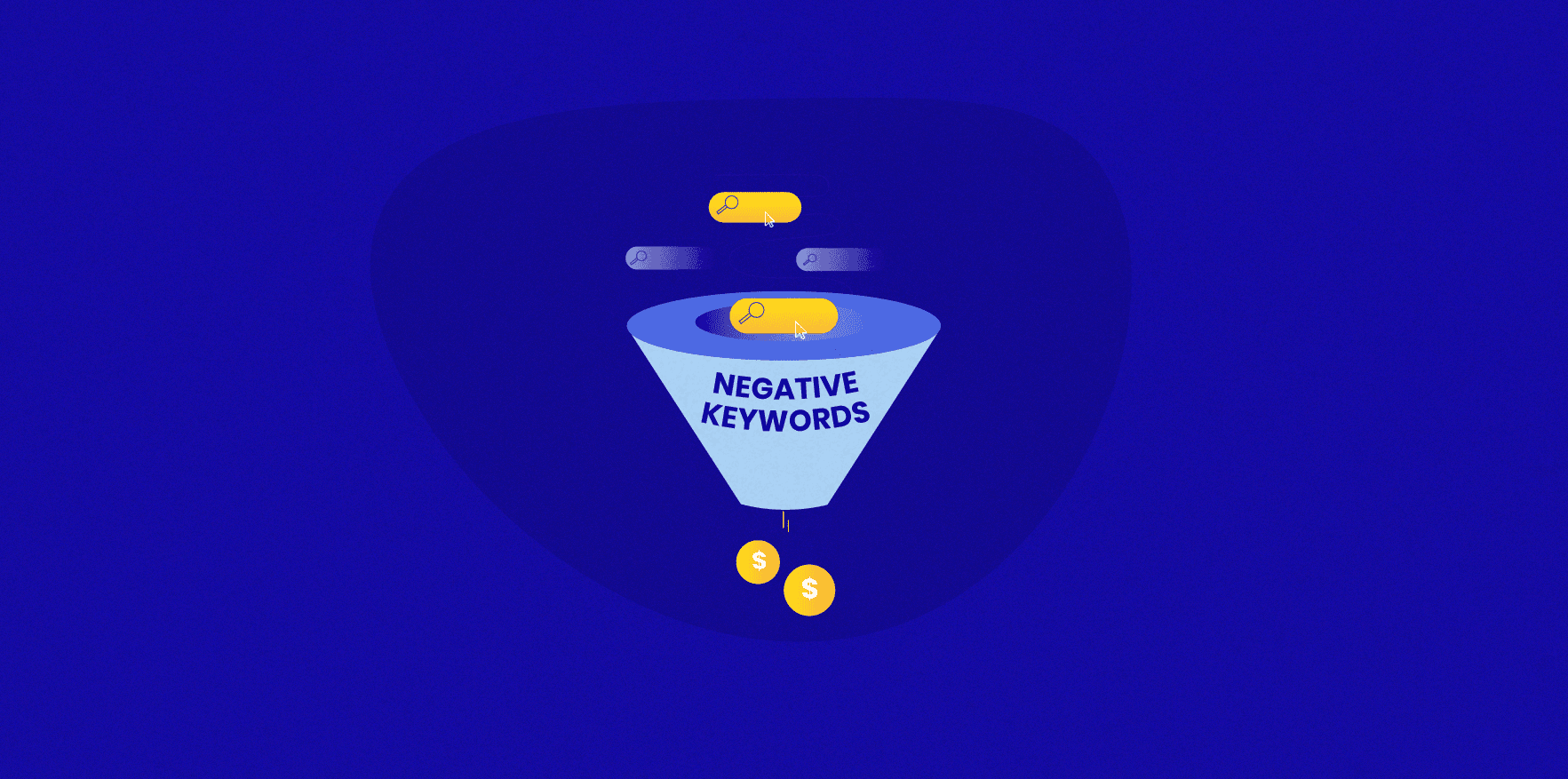
SEO
SEO vs. Value: Which One Is The Right Approach?
Growth Insights
Content

Tracy Nguyen
6 thg 12, 2022
With Google's 26 algorithm updates within the last two years, asking yourself whether to focus on SEO or value will do more harm than good. Instead of thinking of them being against each other, you need to think of them as a synergy that will boost your SEO and content strategy.
Such SEO approaches as focusing on the KPIs rather than the actual value don't work; for instance, Google's Helpful Content update has been depreciating the page's ranking and serves no value to users.
Besides the changing environment, the technological advancement coming from the reporting side also requires writers to develop and focus on both SEO and value.
What does writing for SEO mean?
If you focus your energy and time on SEO, your writing will only aim to rank on search engine results - resulting in practices like going for keywords with high search volume, pushing article after article to position more keywords, acquiring extensive backlinks, etc.
When you focus meticulously on the technical aspects of SEO, you lose sight of the bigger picture which is to be read by humans. At the end of the day, it's not the bots that purchase your product/services, it's the customers who will read and purchase.
However, this doesn't stop people from coming up with new techniques to manipulate the ranking. For instance, instead of using one keyword repeatedly, the new keyword-stuffing strategy would be using synonyms of the same keyword.
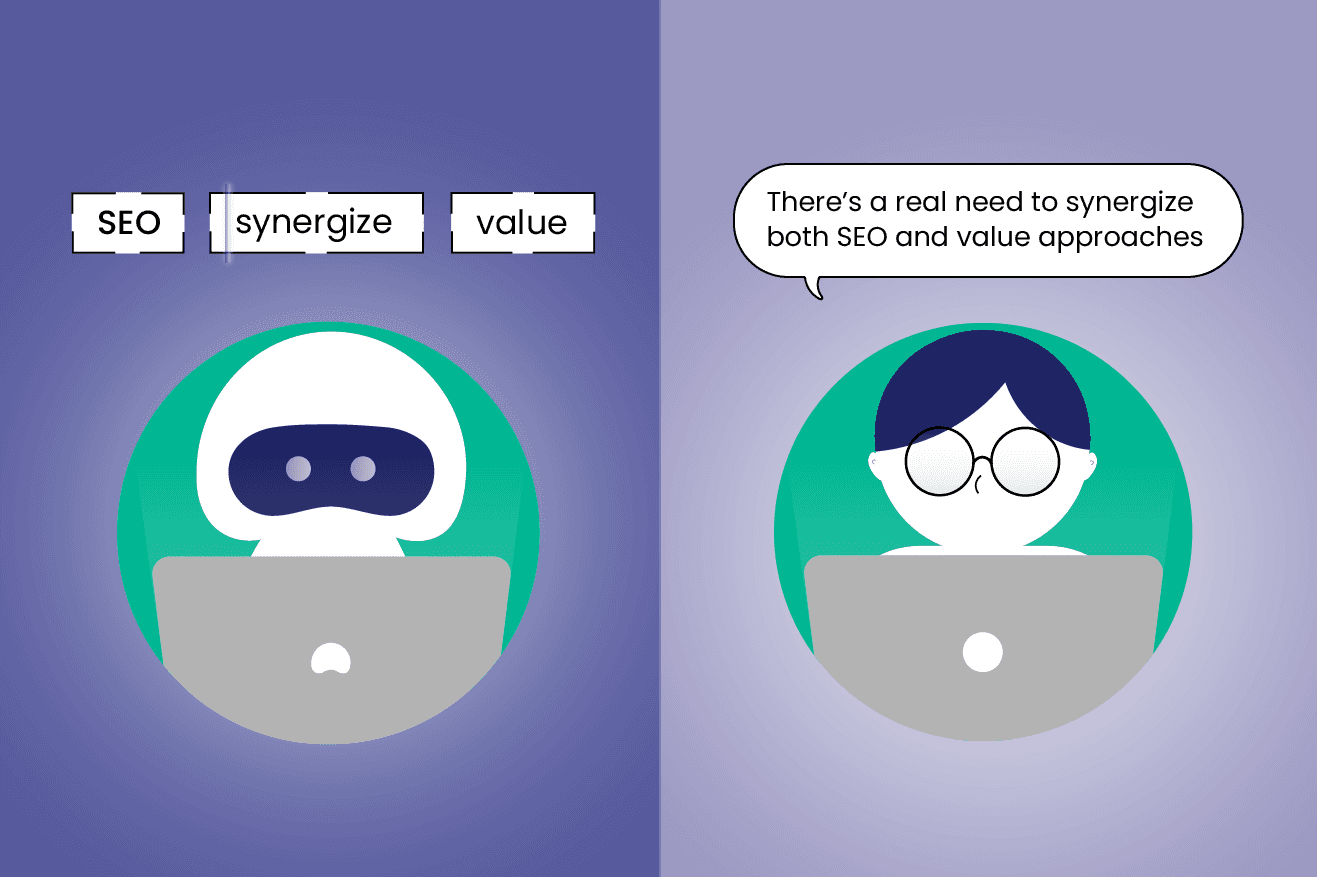
Google's 2022 Updates
In the past, doing all the listed practices would guarantee high traffic and a ranking position for your website. However, chances are high that you will encounter what marketers call 'SEO Over-optimization' which leads to wasted time and effort.
With more white/blackhat SEO getting invented, Google's Helpful Content update's launch on Sept. 9, 2022, was one of the shots Google fired to have better content cater to its users. Hence, the update is designed to maintain the content quality for users by giving a low ranking for automated and duplicated content that is written for bots.
Moreover, the update's announcement called out people who write for SEO by questioning whether they're on the wrong path.
Google, as a business, wants to push what is best for its users to consume so that they will continue to trust Google as a solution. As a result, tactics like keyword-stuffing using synonyms to rank higher won't surpass Google as the bots are getting smarter and better at recognizing writings that don't serve quality for users.
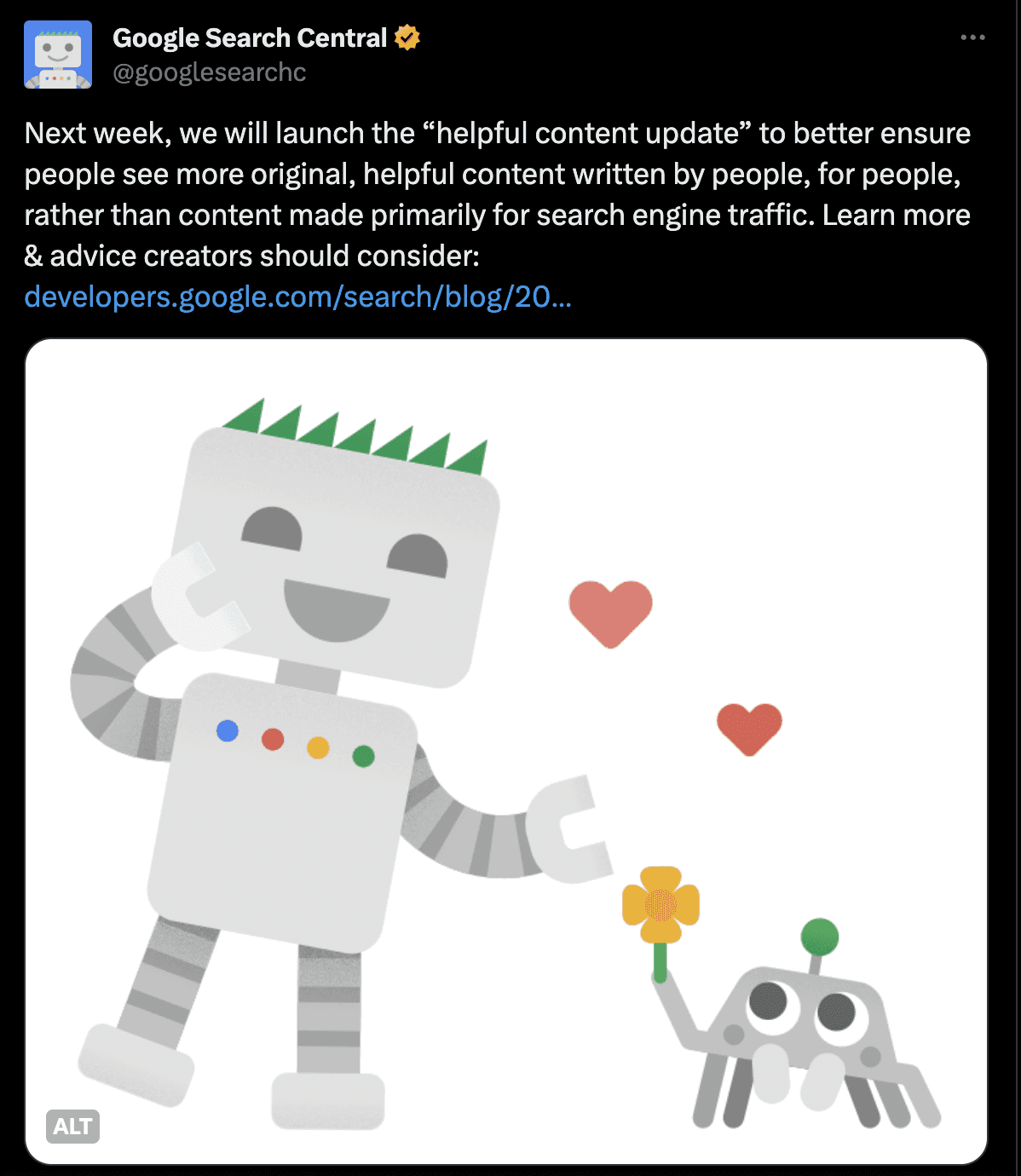
What does writing for Value mean?
At first glance, this sounds like an ideal approach for any writer. Essentially, you're writing to cater to what's best for your readers using value and quality content. However, there's a thin wall between writing for what you think is valuable vs. what the reader thinks is valuable.
No matter how thoughtful you are, at the end of the day, you're not the target audience. Without data, we cannot know or assume the target audience's pain point and what is deemed valuable for them. To some extent, investing in finding ways to be unique and stand out from the crowd is also counter-productive towards building value for readers.
When you focus on being unique, you often forget that an article's value can be small details that your competitors don't have. When an article gets a high ranking, it means there is value for the readers within that piece. If you approach things with a unique value attitude, you will fail to cater to the reader's needs.
Rather than giving your content a 'grand value', it's more productive to stay user-centric and focus on your reader's pain point and how your content can answer it. This will give a purpose to your content which naturally is 'valuable' for your target audience. However, the question here is how to start this process.
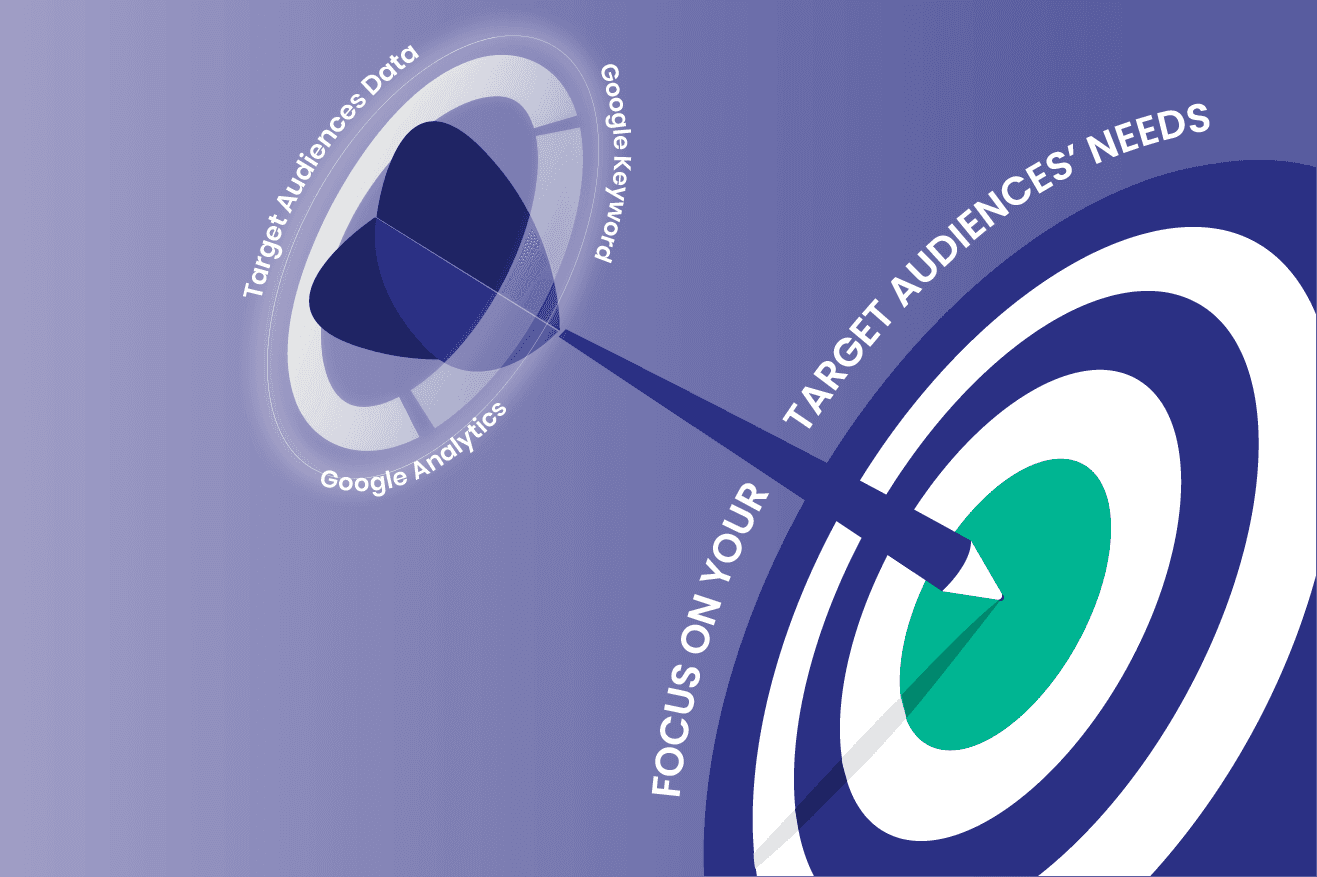
How to get started with it? Focus on your target audience's needs.
To produce helpful content, you need data to research about your reader which will act as guidance for your content. Want to learn more? Read our detailed guide for the 4 steps of producing data-driven content. For recap purposes, here are the steps you can follow:
1. Source your target audience data
a. Reddit, Quora, YouTube, Twitter, and Facebook Group
Community platforms are the first step to understanding your audience better. These materials will be the qualitative data that guides you to what matters to your audience. From their lifestyle to their fear, accumulating that information will come in handy when writing your content.
b. Google Keyword Planner
After collecting the qualitative data, it's time to pinpoint your target audience's intentions with keyword research. A tool for this is Google Keyword Planner where you can investigate a keyword's search volume and competition level. Given that Google Keyword Planner is a PPC tool, you can still use it to figure out which keywords to target your audience - SEO speaking.
c. Google Search Console
To put it simply, Google Search Console is a tool that can help you measure and optimize your website's performance by giving you crucial insights such as which keywords bring results (impressions, clicks, or position) to your site.
It is crucial to understand how Google positions your content - knowing the outcome can also be biased as it relies on what content you have. Nevertheless, the data will reveal which keyword you're positioned on and from which pages.
With that data, you can evaluate whether your current content and its positioned keywords are relevant to your business objective. Moreover, you can also optimize keywords that bring traffic and impressions to your site.
d. Site Search Reports on Google Analytics
Another way to source data is to analyze your current website's database. If you set up a search bar on your website and track it with Google Analytics, you can better understand what your audience is still looking for - knowing they are already aware you could be a solution. Having this data can help you design content that pushes them to take action for your business.
e. Interview your target audience
This is the most informative and accurate way to get information as you're getting the information from the ones you will be targeting. However, it's also the most time-consuming and less actionable on the list as not every business has the budget and time to conduct interviews. However, if you do have the budget and time, conducting these interviews can be a long-term investment for your content strategy.
2. Organize your content in the content pillar/topic cluster
3. Start writing about your content and test it
4. Analyze your performance and adjust your content strategy
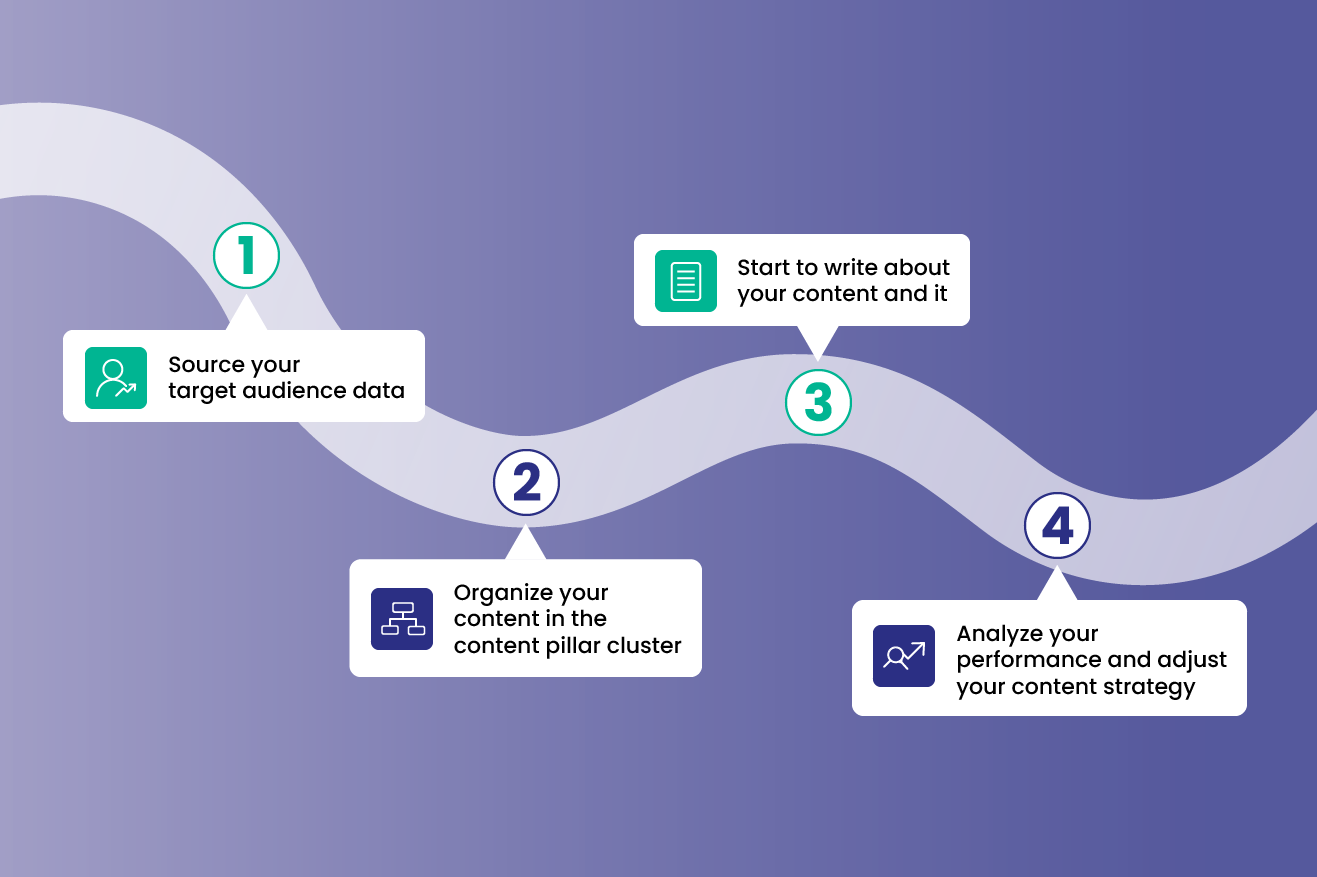
Remember, it doesn't stop at producing relevant content. Once you get writing done, it's time to optimize your content so it's ready for the bots to crawl and index. For a detailed guide on writing with data, join our Slack channel to get the first article access.
Join the talk!
Stay on top of digital marketing innovation thanks to the insights from our internal Slack.
We post everyday!


